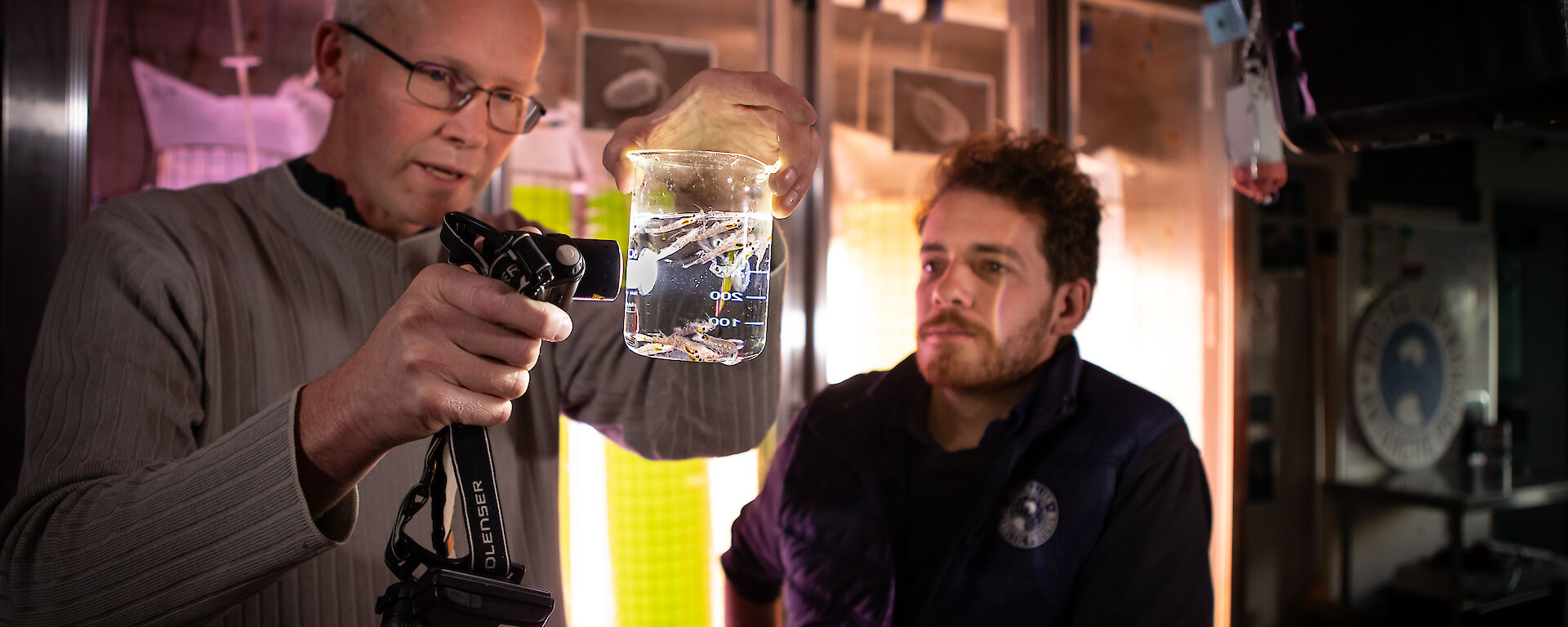When it is winter in the aquarium, this image will be dark. There is limited light in August, but it will get progressively lighter after that (see illumination schedule below).
Antarctic krill (Euphausia superba)
The krill in this tank are illuminated at the approximate times (AEST) indicated on the following table. On each day, light intensity will increase from dawn, peak at midday then decline until dusk. Peak midday light intensity and subsequent video clarity is greatest in months with long photoperiods. If the krill are not clearly illuminated at the time you visit this site, a video of krill in the aquarium is available.
| Actual month | Simulated month | Light on | Light off |
|---|---|---|---|
| January | December | 03:30 | 20:30 |
| February | January | On all day | – |
| March | February | 03:30 | 20:30 |
| April | March | 05:30 | 18:30 |
| May | April | 06:00 | 18:00 |
| June | May | 07:30 | 16:30 |
| July | June | 09:30 | 14:30 |
| August | July | – | Off all day |
| September | August | 09:30 | 14:30 |
| October | September | 07:30 | 16:30 |
| November | October | 06:00 | 18:00 |
| December | November | 05:30 | 18:30 |
Each month, the day length that these krill are exposed to will change, simulating the natural cycle of day length in the Antarctic. Day length has a strong effect on the biological clock that controls Antarctic krill metabolism and reproduction. Careful control of day length ensures these krill spawn in the laboratory at the required time of year.
This tank is set to a day length cycle that will induce spawning between February and April, one month later than krill in the wild. Eggs collected from these spawns will be used by researchers in laboratory experiments.
The krill are fed phytoplankton 6 days a week, usually between 8:00 am and 10:00 am. The water may appear cloudy until the krill filter the phytoplankton from the water. Come back in a few hours and the tank will be clear again.
The circular structure towards the top of the tank is an automatic feeder. The high density of phytoplankton makes the water appear dark. The phytoplankton are slowly released from the feeder during the day to provide the krill with some food at all hours of the day.
The krill in this tank were caught on Voyage 2 of the RSV Aurora Australis in the 2016–2017 season, 15 January 2017, 62.3274°S, 138.8479°E. They were caught with a rectangular midwater trawl net at 55 metres depth.


